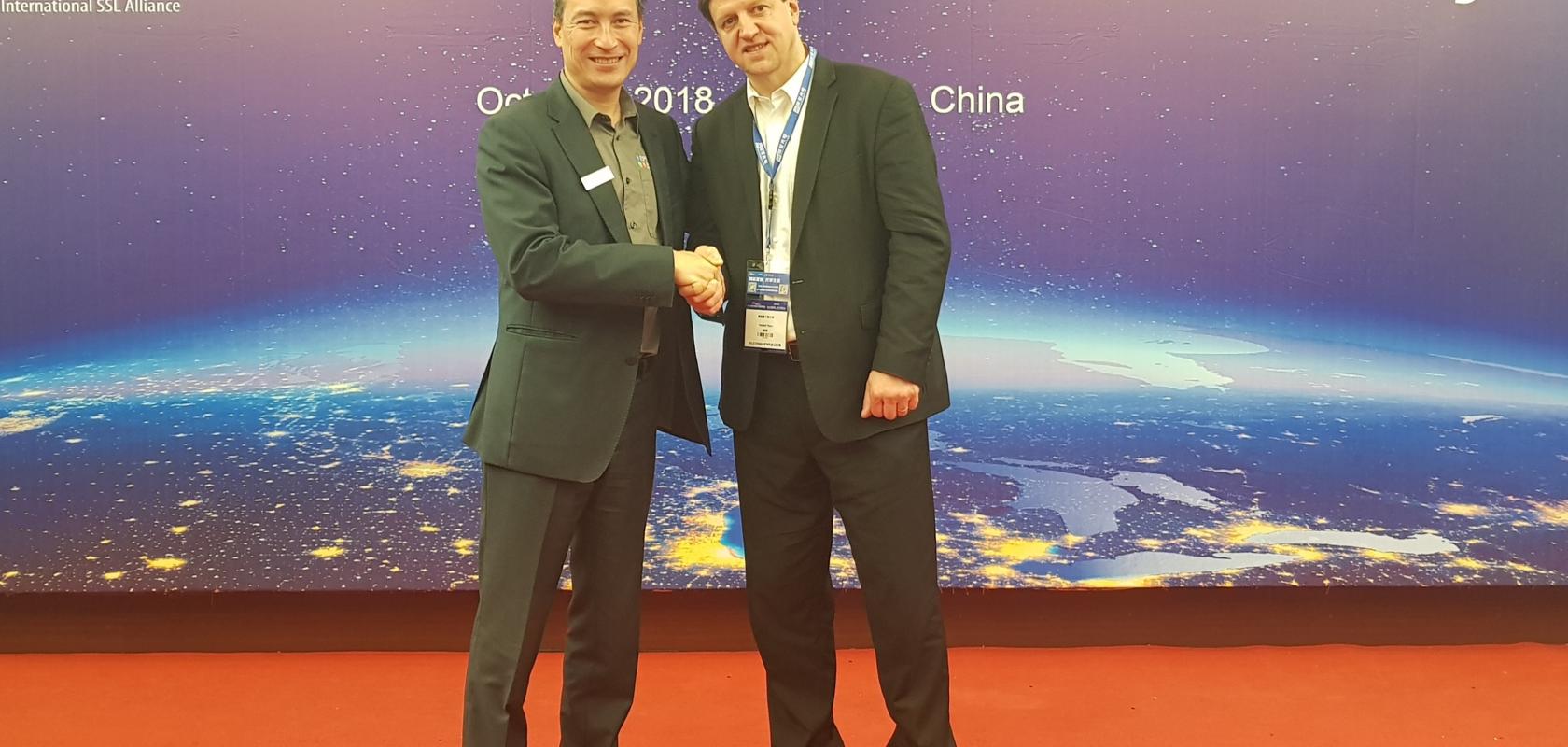As part of new series of articles on entrepreneurship, Carlos Lee, director general of the European Photonics Industry Consortium, speaks to pureLiFi founder Professor Harald Haas, who demonstrated and coined ‘LiFi’ during a TEDGlobal talk in 2011 in Edinburgh
How LiFi was born
Haas noted that the theory behind LiFi – using visible light to transmit data – is not new. Alexander Graham Bell came up with the photophone, and research by IBM in the 1980s also showed that LEDs can be used for data communication. However, what differentiates LiFi technology, according to Haas, is the use of light for mobile communication.
Before his TEDGlobal talk in 2011, Haas recounts brainstorming ways of describing the new-found technology in simple terms with his University of Edinburgh colleagues. Because of the similarity of the technology with WiFi, he came up with the idea to call the technology LiFi. Just like WiFi, LiFi allows the user to transmit data wirelessly.
A quarter-century in wireless communication
Haas’ background is in wireless communication, starting his career in 1995 with Siemens in Munich. He worked with a team to develop the first GSM chipset used in the old Siemens mobile phones. He stayed with Siemens for a couple of years before moving to Jacobs University Bremen, Germany, in 2002. It is during this time when Haas developed the idea of using LiFi for wireless data communication. In 2006, Haas recalled making public demonstrations in Bremen using light on a desk lamp as a vehicle to transmit high-resolution photographs.
In 2007, Haas went to the University of Edinburgh where visible light communication became a main focus of his research.
When his work started gaining recognition, he was invited by TED Talks to conduct a demonstration in 2011, which led to the term LiFi being born.
The driving force behind LiFi research
When conducting initial research, Haas wanted to achieve high-speed data transmission. He came up with various modulation techniques, in particular orthogonal frequency division multiplexing (OFDM), to modulate the intensity of LEDs and maximise data rates in the available channel.
This research took place before the smartphone revolution kicked in. Once smartphones became ubiquitous, it highlighted the limitations of wireless communication, especially in crowded areas, and the challenge of limited spectrum via traditional radio wave-based data transmission became apparent.
Haas saw how LiFi could overcome current issues in radio wave-based data transmission, and this is one driver of his research. And, because of the projected technology revolution and the need for better wireless communication that comes with it, Haas believes that the next decade or so will be crucial in the transition from radio- to light-based wireless data communication.
Why LiFi?
Too many devices using WiFi can cause lowered data rates and lead to what is called the ‘spectrum crunch’, Haas noted. This is because radio waves can move through walls and cause interference with other radio transmitters. With too much interference, the rate of data transmission will decrease. To help illustrate the problem, Haas referred to stadiums in the USA that place WiFi routers underneath the seats so they are closer to people, as the human body – mostly made up of water – can attenuate WiFi signals.
Such a problem is virtually non-existent with LiFi, as light cannot pass through walls or solid materials and cause interference, and light can be contained spatially in a much simpler (and cheaper) way. This also makes LiFi communication much more secure and less prone to hacking that WiFi.
In terms of scalability, LiFi is more efficient because light has a capacity 2,600 times that of radio waves. Hence, light provides more data transmission highways than radio waves. More importantly, LiFi can make use of existing infrastructure in order to deliver wireless data transmission.
Last year, Haas and colleagues equipped a classroom with LiFi at Kyle Academy secondary school in Ayr, Scotland. The classroom has eight LiFi-enabled LED light bulbs in the ceiling, and students have LiFi dongles from PureLiFi that plug into their laptops, enabling high-speed connectivity through the lights.
As a consequence of having a LiFi connection in one classroom, the adjoining classrooms experienced higher WiFi speeds because the interference caused by too many radio waves was reduced.
LiFi can also be used in many other applications. In augmented and virtual reality technology, for example, LiFi can help the user avoid the sea-sickness effect because it minimises the latency that causes vertigo.
A LiFi-connected world
Haas envisions a world connected through LiFi. To achieve this, the LED industry will play a vital role. Haas predicts that LED lights will be equipped with data-connectivity properties to cater for LiFi-based data communication. LEDs can also be connected to the internet wirelessly using point-to-point optical wireless communications between LED light bulbs. Haas also sees LED light bulbs in the ceilings of people’s homes providing cloud storage for videos, music and other data.
A closer connection with the lighting and mobile industries is needed to realise a LiFi inter-connected ecosystem, according to Haas, which will require the support of standardisation. Currently, there is significant momentum for this in the Task Group of the IEEE 802.11bb standardisation body.
In addition, Haas envisions that LiFi will help close the digital divide and bring more internet connectivity to remote areas through the use of solar panels with the dual function of a light energy harvester and data transmitter.
For Harald, it is inevitable that LiFi technology will bring more connectivity to the world. However, a lot of effort must be exerted in order to turn this vision into reality. Players need to align themselves. The LiFi industry must also receive support from various fronts in the public and private sector for integration and infrastructure. Combined with the continued drive by key players like PureLiFi towards innovation and adoption of LiFi technology, LiFi will definitely make a better and more connected world. EO


